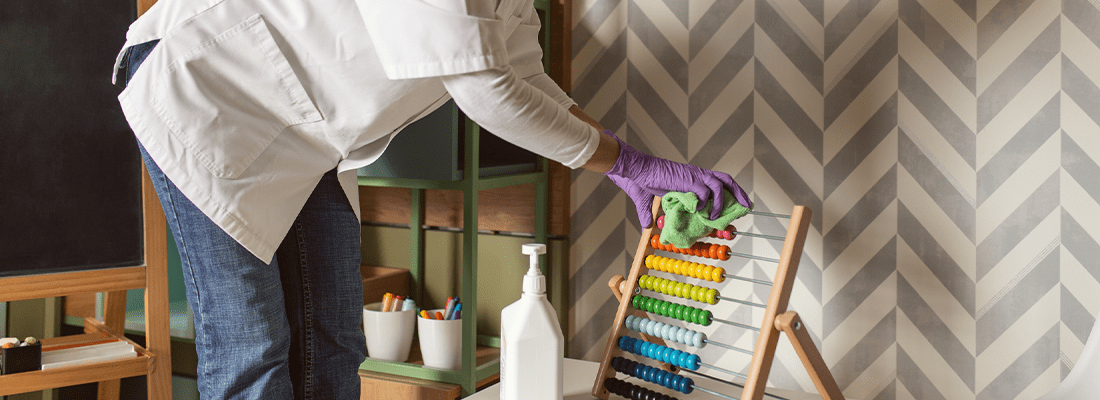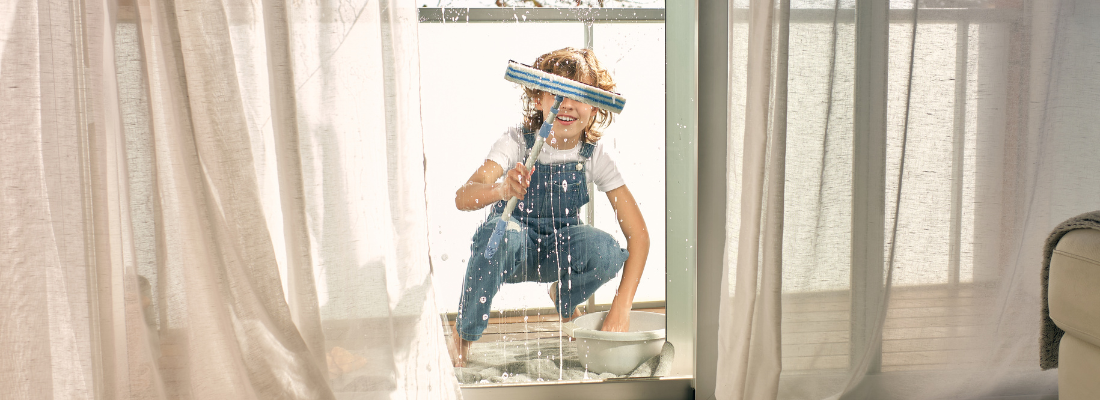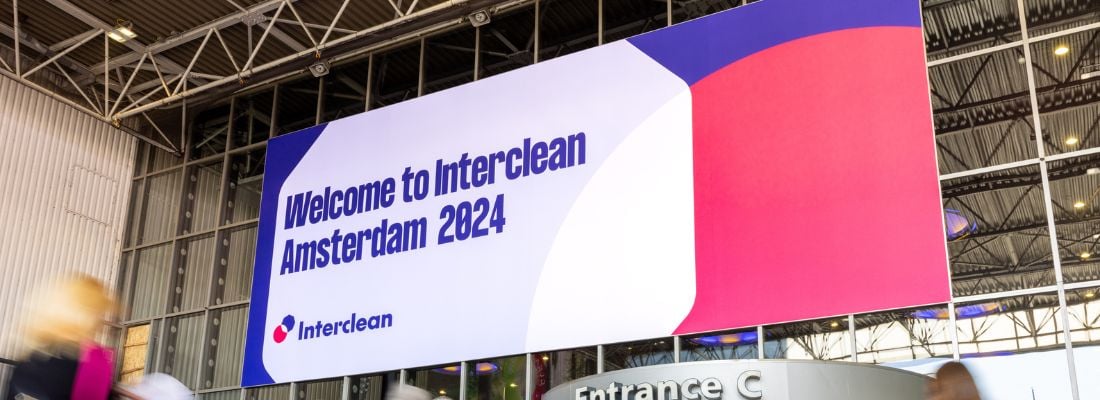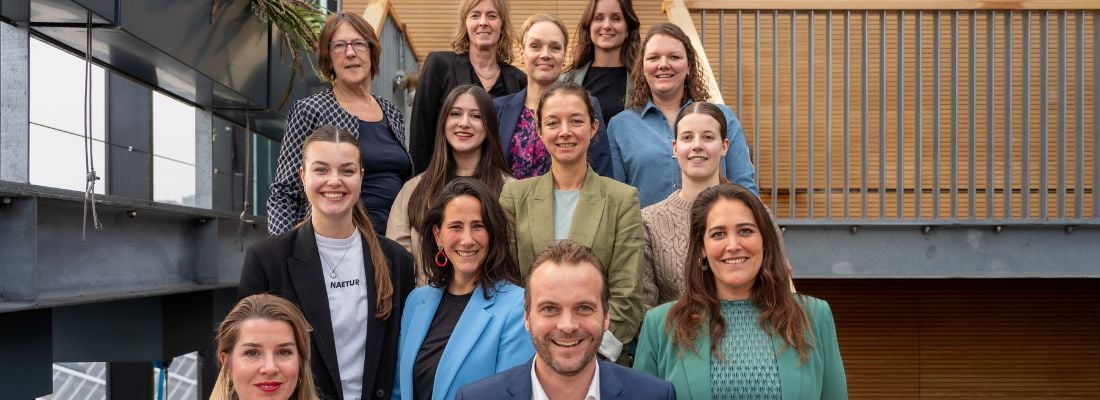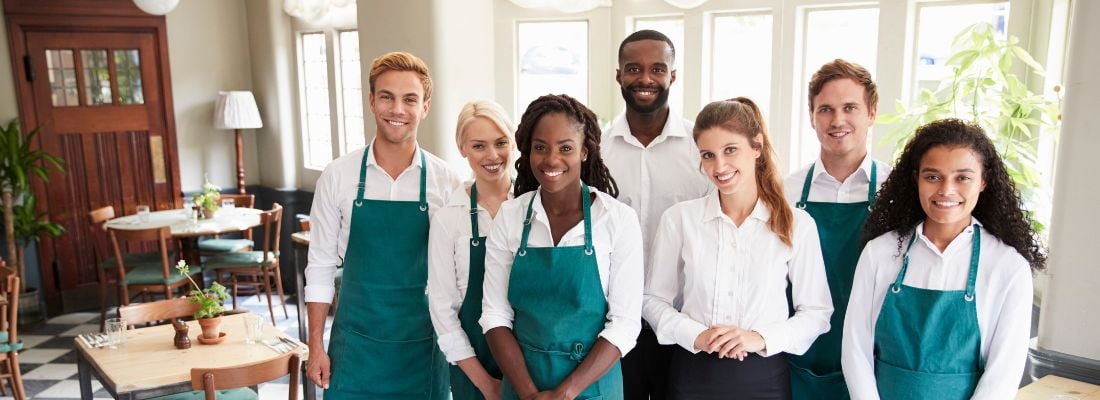How do you ensure a clean and hygienic school?
Primary schools are slowely opening their doors again, but must operate within hygienic measures. But what does that mean? How do you ensure a clean, hygienic school? And how do you keep it that way? We share some practical tips to get started.
General measures
Firstly, it is of course very important to follow the general measures of RIVM that apply to prevent the spread of the coronavirus. A refresh:
- Keep a 1.5 meter distance
- Wash your hands regularly with soap and water
- Cough and sneeze in the inside of your elbow
- Use tissue paper
- Do not shake hands
- Stay home if you have a cold or a fever
Cleaning primary schools is a profession in itself
But that does not guarantee a hygienic and safe primary school. Cleaning primary schools is a profession in itself, as Service Management concluded earlier. Cleaning schools is difficult, partly because of the different circumstances and the diversity of areas to be cleaned. This is in addition to the fact that, according to the GGD, most primary schools are lagging behind when it comes to structured cleaning.
Specific cleaning challenges
Primary education has its own challenges in the field of cleaning and hygiene. For example, research by Essity showed that toilets are often so dirty that it rains complaints. In fact, it is so bad that children try to avoid the toilets and prefer to keep their pee for as long as possible. In addition, children often cannot wash their hands properly. The floors in primary schools also require extra attention. On the one hand because a lot more dirt is entered, for example through a sandbox on the playground. On the other hand, floor maintenance is extra important because children in the basement still often play on the ground. Dusty and dirty classrooms are also a common problem.
Start with a cleaning schedule
The foundation of a clean school is based on a cleaning schedule, says Municipal Health Services. In the whitepaper Healthy at School of sector organization OSB, it is explained what should be included in such a cleaning schedule: Who does what, when and how? For each building and each room, it is described what (windows, floors, toys, meeting rooms, textbooks) and how (dry, wet, dust wiping, vacuum cleaning, with or without cleaning agents) are cleaned. But also how often: daily, a few times a week, every month or only during holidays. And by who? What do teachers and students do and what does the cleaner do? It is of course important to actually adhere to this schedule. OSB has also made a protocol for cleaning according to the new rules. For all protocols on the 1.5 meter economy, see the OSB website.
General points of attention for cleaning
Important general points of attention (not corona-specific) to remember in the cleaning schedule are:
- Walking routes
- Floors under tables
- Ventilation grilles
- Do the crafts every month (due to dust)
- Keep plants dust and mold free
- Mapping critical contact points
But even with that you are not there yet, not at all in the current corona era. According to the NVZ School Hygiene Manual, good hygiene requires, in addition to washing hands regularly, identifying the critical contact points. Then clean it and disinfect it if necessary. Because please note: disinfection is of no use if it has not been properly cleaned and the continuous disinfection of entire school buildings is completely pointless.
This means that particular attention must be paid to surfaces and objects that often come into contact with the hands of pupils, teachers, parents and employees. It is important that the correct cleaning agent is applied correctly and that these contact points are cleaned regularly. For large surfaces, the use of cleaning machines can save a lot of time, says the NVZ.
Examples of critical contact points at school
No idea what the critical contact points at your primary school are? Consider this:
- Chairs
- Tables and desks
- Door handles (classrooms, cupboards, toilets)
- Dispensers (such as soap, towels and toilet paper)
- Toilets
- Computers with accessories
- Toys, games and craft supplies
- Light switches
- Phones
- Pencil sharpeners
- Cranes
- Gym equipment
RIVM hygiene standards
In 2016, RIVM set hygiene standards for proper cleaning in primary schools. Especially the guidelines with regard to disinfection in school buildings are good to repeat. An overview:
- Disinfect only with products authorised by the Board for the Authorization of Plant Protection Products and Biocides (Ctgb)
- Household Chlorine (bleach) should not be used for disinfection. The product is unstable and not allowed as a disinfectant
- Again: only disinfect if first cleaned. Disinfectants do not work well when something is still dirty
- Always follow the instructions for use of the disinfectant
- Allow what has been disinfected to air dry thoroughly
- When disinfecting, always wear gloves made of nitrile or latex that comply with the healthcare standards and wash your hands with soap and water afterwards
Check the cleaning quality
It is important to make good agreements with each other (primary school and cleaning company) about when something is clean. For aesthetic aspects, such as a bit of fabric on top of a closet or in the hallway, it may be less important to make strict agreements. For sanitary facilities it is wise to agree on stricter standards.
What is technically clean or not, there are generally applicable standards. It is therefore a good idea to have quality checks (such as the VSR-DKS) carried out regularly. As the GGD says: “Strict controls on the cleaning company has nothing to do with mistrust”. A clean school is simply important. Especially now.
VSR has developed an indicative measuring system especially for primary education. This system makes it easy to check whether the technical cleaning quality, as described on the cleaning card, is met. The check results in a pass or fail.
Encourage clean behaviour of school users
Cleaning at school may still be fine, but if the users (students and teachers) do not behave 'cleanly', then there is hardly any start. The teacher has the role of educator and supervisor that parents have at home at school. Teachers play an important role in the formation of the child together with parents. So it can certainly be a good idea to teach the pupils a few things about clean behaviour and toilet hygiene. Not everyone agrees, by the way, a research by Essity shows that a large proportion of teachers believe that it is the parents' job to teach their children to use the toilet hygienically.
Basic rules about clean (cleaning) handling
Whether it is a question of education or not, it is important to use at least three "clean" rules for the children. Getting attention for sweeping feet, leaving the toilet tidy and cleaning up together is quite normal.
"Clean" rules for pupils:
- Wash hands after going to the bathroom or after tinkering
- Wash hands before eating or drinking
- Clean up your own mess, don't throw anything on the floor
- Wipe your feet when you enter
Teaching programs about hygiene for influencing behaviour
If you want to go beyond just a few basic rules, you can educate students about cleaning and hygiene. For example, by implementing a curriculum or by influencing behaviour. Gom Education has a 1-2-3-Clean concept. Michel van den Berg, business unit director of Gom Education, commented: “In the lower groups we shoot an interactive film with Claire, an animated figure that explains the children about, for example, washing hands and the rules for visiting the toilet. She also introduces her Gum colleague, who lives in class in person. The children are introduced to our colleague who, often outside school hours, cleans their school. She also explains why we do things in a certain way and what we want them to do. Then you really notice that children are becoming more aware and that it works.”
The teachers themselves can also regularly pay attention to clean behaviour in a playful manner, thus providing students with insight into cause and effect. For example, by reading a picture book about a clean subject during a circle.
And finally: keep communicating!
And finally: communication is extremely important for a clean school. And that goes for all sides: communicate between school management, teachers, parents and cleaning company. So as a school management: underline your intention to keep the school clean and hygienic towards the parents and communicate in a clear language about the cleaning policy. What about that? What are you all doing? What are dos and don'ts for parents and children?
Also communicate well with the teachers. On the one hand because they often know better what happens in practice and see what goes right and wrong. It is possible to intervene better and faster by communicating. Also make sure that the teachers are well informed about agreements made, so that they clearly know what is expected of them and what they can expect from the cleaning company and the school management.
And of course do not forget: the communication between cleaning company and school. This not only involves continuous mutual coordination, but also joint dialogue. After all, keeping a school clean is team work and a shared responsibility.
Keep up with the latest Cleaning and Hygiene developments
Sign up for the Interclean newsletter and be the first to know about the newest industry developments.
Share your stories with us!
Do you have an innovation or interesting news you would like to share with the professional cleaning and hygiene industry? The Interclean website and social media channels are a great platform to showcase your stories!
Please contact our press department interclean@rai.nl.
Are you an Interclean exhibitor?
Make sure you add your latest press releases to your Company Profile in the Exhibitor Portal for free exposure.
Receive the best newsletter on cleaning & hygiene - straight to your inbox!
We promise never to send you spam and you can unsubscribe at any time!
